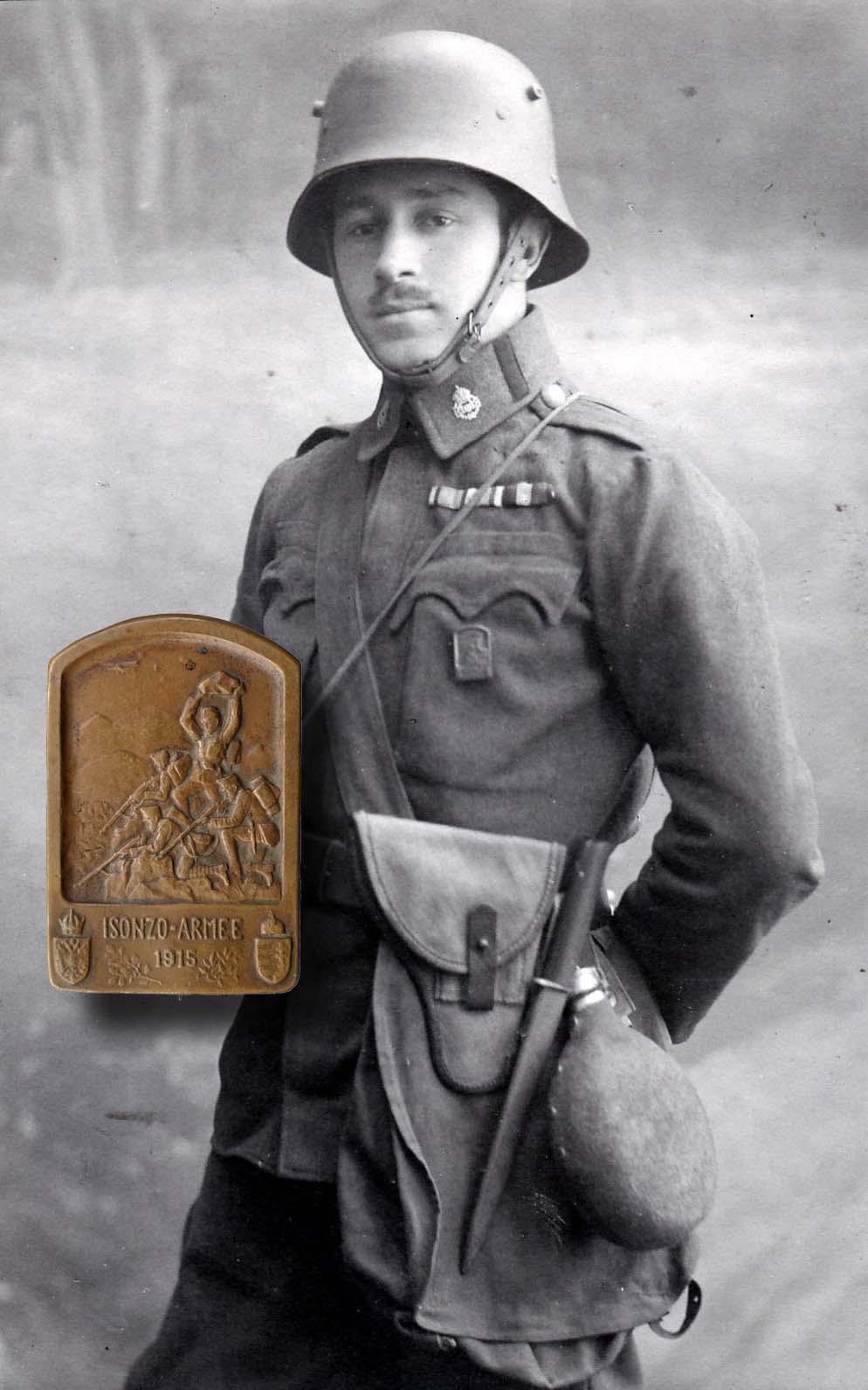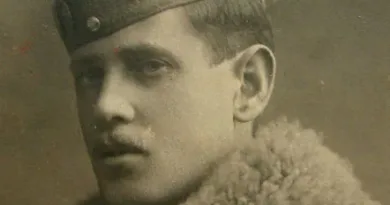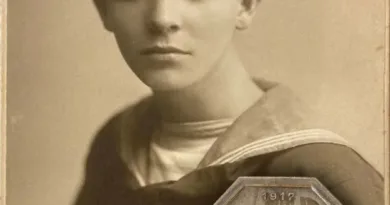Isonzo Army
A nice wearing photo of another army badge can be seen in this post. Here again, I’m going to take the opportunity to introduce the huge variety of more common badges. The image shows a soldier with assault knife and helmet typical of assault troops. Under the badge is a gas mask in the original image. There’s no way of knowing which unit the soldier belonged to. His badge is the Isonzo-Armee badge. The army consisted of dozens of infantry regiments.
The Isonzo Army was originally the 5th army. It was placed on the Italian front in May 1915. Thereafter the name was changed. The army had a badge in the 1914-15 period too, which I will present in a later post. On the Italian front, he was quickly renamed. Its commander-in-chief was Svetozar Boroevic. You can read more about him here. The army defended the eastern part of the Italian front from May 1915 to November 1917. This section began roughly in the Carinthian Alps and turned south from there, along the Isonzo valley to the sea coast. The western part of the Italian front was defended by the 11th army.
I have wondered a lot why there are so many readings and preserved memories of this front line in Hungarian military history. The Russian or Balkan front is far dwarfed by this front. Perhaps it is because this front required highest human effort and support from the troops. Units remained in the front line for two weeks, meanwhile in the Russian front they usually stayed a month or even longer. There were relatively quieter periods on the Eastern front but this was not the case here. Especially not in 1915 and the first half of 1916. At that time, the successive Italian attacks followed, and artillery activity continued during their breaks. Another reason may be that the events of the Eastern Front could not be searched for after the creation of the Soviet Union. On the other hand, Italy has been allied with Hungary. So the Great War gave the opportunity to commemorate together.
There are several variants of the Isonzo Army badges in the post. The opening image shows the most common large tombak badge. There was also a silver version of this. The image below shows this along with another badge dated 1916. The first image, the “classic” badge, shows soldiers of some common infantry regiment in the mountain environment. The second badge depicts Tyrolean hunters, who can be recognized from groan feather ornaments on their hats.


But there were also two smaller versions of the “classic badge.” One of these is exactly the same as the larger design. The other one, on the other hand, shows a different year: 1915-17. These smaller badges are only made in the tombak as shown in the pictures.






